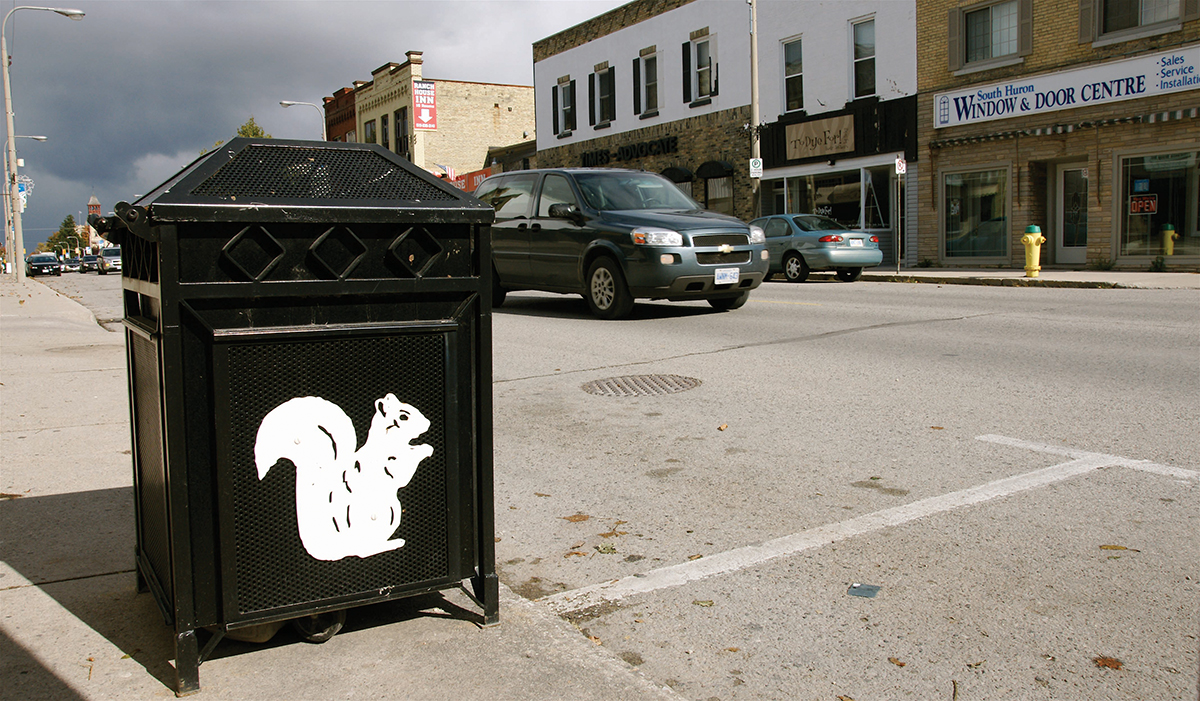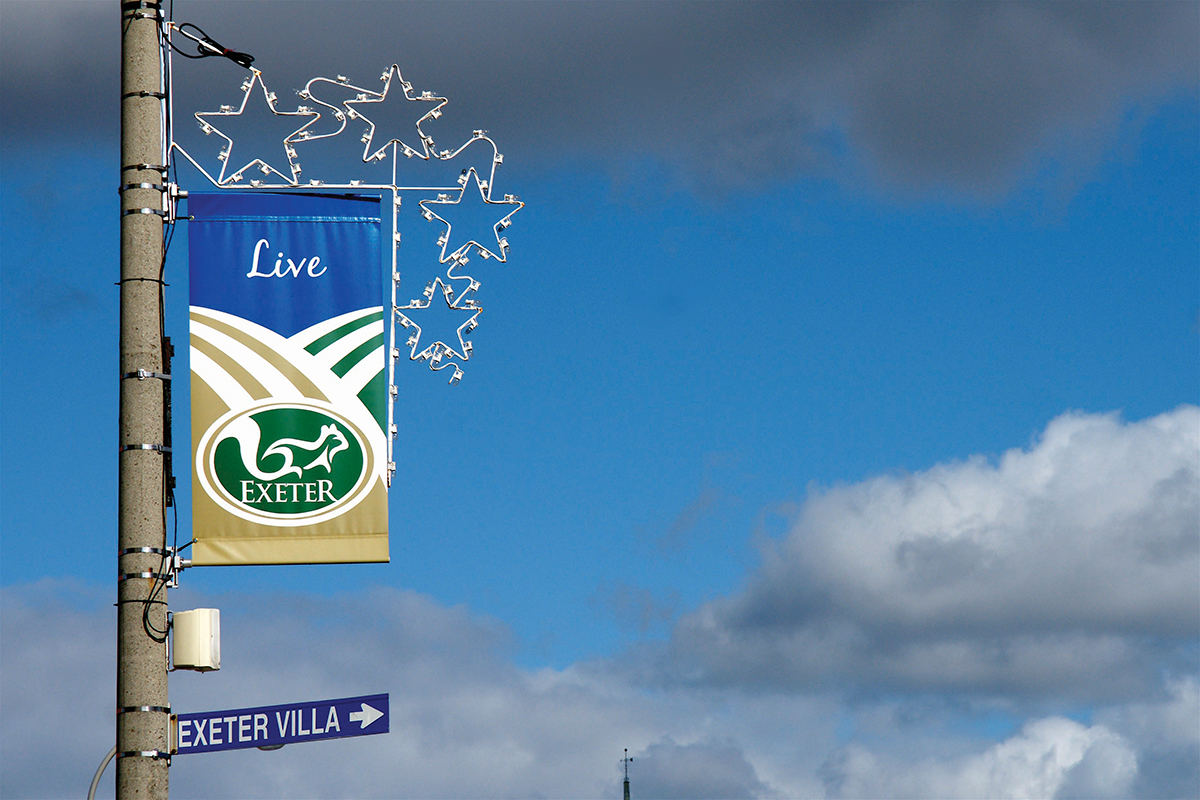
One sunny autumn afternoon, Paul and his daughter, Tennille, were having a picnic in Toronto’s Trinity Bellwoods Park. After lunch they tossed a few pieces of bread toward a nearby tree to try to entice some neighbourhood wildlife down for a visit. They were hoping to catch sight of a squirrel. But the squirrel that eventually climbed down from its tree to munch on Paul and Tennille’s snack wasn’t what they were expecting—it was a squirrel as white as snow! Its eyes darted across the golden leaves that lay between it and the inviting bread. Slowly and carefully, it crept a little closer.
Toronto is home to the eastern grey squirrel. Although it’s hard to guess just how many squirrels live in Toronto, ask any kid who walks to and from school and she’ll tell you: there are lots. Eastern grey squirrels spend most of their lives up in the trees, where they eat, sleep, and travel great distances without ever touching the ground. They leap like acrobats with powerful back legs and use their sharp claws to cling to branches. Sometimes they end up dangling after an ambitious jump, but can usually hoist themselves back up again.
Eastern grey squirrels have long, curved fluffy tails that are often as long as their bodies. A squirrel’s tail helps the squirrel balance as it walks and jumps around. In the winter cold a squirrel’s tail also acts as an extra layer of warmth to snuggle with and block the wind. You may think a squirrel is showing off to you when it twitches its tail from side to side, but it’s really just telling its pals how it’s feeling, or trying to scare off a potential predator, like a curious cat or an overly playful dog.
Although they are happy to move into your attic or crawl space (if they can get in), most squirrels build nests. Sometimes a squirrel makes its nest inside the hollow part of a tree. Other times, a squirrel will make a nest of leaves and twigs, called a “drey.” Squirrels build their drey high up in the crown of a tree, on a strong limb near the trunk. Mother squirrels give birth to about two or three babies, usually twice a year. Squirrels are ready to leave the nest and move out on their own when they are about three months old.
Squirrels eat mostly nuts they find in trees. Toronto’s squirrels are well fed, often eating scraps of food left behind or dropped by people. They rarely ever lack for snacks in a big urban city—especially with people like Paul and Tennille so eager to feed them.
Despite their name, not all eastern grey squirrels are grey. In fact, many of Toronto’s eastern grey squirrels are black or a mix of black and grey, called “salt and pepper.” Either way, their shiny dark fur is perfect camouflage for scuttling up the trunk of a silver maple. The white squirrel that visited Paul and Tennille was a special kind of squirrel. Not many people get to see a white squirrel, and those who do usually can’t believe their eyes. But what makes a squirrel white? Colour in our hair, eyes, and skin is created by special cells in the body called “pigment” cells. Once in a while, the pigment cells in animals make barely any colour, resulting in white fur. This is called “leucism,” and it is passed on to some squirrels from their mother and father: if a squirrel has two white squirrels for parents, for example, that squirrel will also be white. Leucism doesn’t make a squirrel unable to do anything black, grey, or brown squirrels can do. The only difference between them and other squirrels is their white fur.
Some people get very excited when a white squirrel crosses their path. To see one dart about is like spotting a shooting star—as quickly as it’s there, it’s gone. But because they are so bright against trees, bushes, and grass, they don’t blend in the way their darker cousins do, so they are easier for people—and predators—to see. It is only during the winter when they are safely protected, hidden by blankets of snow.
Toronto is proud of its small population of snowy-white eastern grey squirrels, and has many landmarks that celebrate them. You can’t miss the big painted white squirrel on the sign of the White Squirrel Coffee Shop, at Queen Street West and Walnut Avenue. (And you won’t want to miss their signature White Squirrel ice cream!) There’s also White Squirrel Way, a newer street whose name came from anonymous suggestions provided by patients and staff of the Centre for Addiction and Mental Health. Toronto’s former deputy mayor Joe Pantalone says he chose the name White Squirrel Way because it celebrates the diversity and unique beauty of the surrounding neighbourhood.
Torontonians do all they can to help keep white squirrels out of harm’s way. In 2012, a nine-week-old female white squirrel was brought to the Toronto Wildlife Centre after being struck by a car near Trinity Bellwoods Park. The staff took great care to heal her wounds. They wrapped her in a blanket to keep her warm, and gave her medicine to be sure she made a full recovery. After a few weeks of bed rest, the little white squirrel was good as new and scampering back into the park to munch on acorns and pizza crusts.
As Paul and Tennille lured their white squirrel closer, they noticed its eyes glancing up and down, from the sky to the tempting bread. “What could it be?” Tennille asked her dad, wondering why the squirrel was so hesitant to come closer. Then in a flash the white squirrel spun around and darted back up the tree, leaving the bread untouched. Barely a split second later, Paul and Tennille noticed the dark shadow of a large red-tailed hawk. As the shadow grew larger and closer the hawk swooped down just above the bread. If the white squirrel had not been so careful, the hawk surely would have caught it in its beak and enjoyed a snack of its own. Luckily the white squirrel was clever and fast—it knew would be seen against the autumn leaves and saw the hawk coming. Although their fur can sometimes put them at a disadvantage, white squirrels are able to live and flourish just like squirrels of other colours. They show us there’s nothing wrong with being different. And maybe that’s what people love about them most.
Exeter Is Nuts About Squirels!
Spend an afternoon at MacNaughton Park, in Exeter, Ontario, and you’re likely to spot a number of white squirrels frolicking in the grass and scampering up tree trunks. The white squirrel is the adopted symbol of Exeter, and a source of civic identity and pride. The town, a three-hour drive west of Toronto, proudly declares itself “Home of the White Squirrel.” Tourists flock to Exeter just to catch a glimpse (and hopefully snap a photo) of one of the special little critters, which residents call their “white wonders.” Exeter’s mascot is—you guessed it—a white squirrel, who can be seen at parades and festivals. Walk down Main Street and you’ll quickly be reminded of Exeter’s unique furry inhabitants, with images of white squirrels on lampposts, street signs, and garbage bins. In 2001, the area surrounding Exeter passed a bylaw to protect and conserve the white squirrel, making it illegal for anyone to trap, injure, hunt, or otherwise kill a white squirrel. With laws to protect them and admirers to feed them, it’s no wonder that these “white wonders” have thrived in Exeter.

